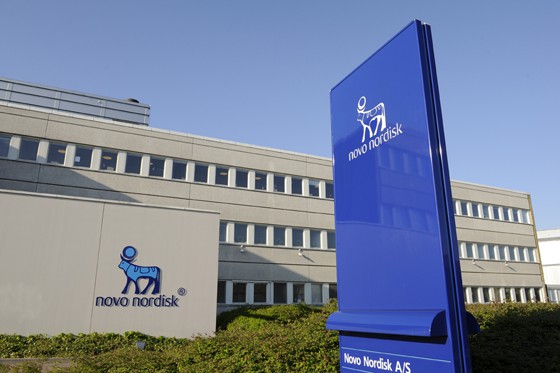
Danish diabetes specialist Novo Nordisk has displaced Sanofi as the world’s biggest seller of diabetes medicines, according to exclusive new data published on PMLiVE.
Novo generated $11.3bn in sales last year for drugs that cater for diabetes – a growth of 8% on 2013.
Sanofi slipped to second place with sales of $9.2bn, although the French firm still saw sales grow by 11%, according to consultants at GlobalData.
Novo’s success has come from the strength of its diabetes brands, with type II diabetes injection Victoza (liraglutide) up 15% last year, with sales hitting $2bn.
The firm also has high hopes in its new obesity drug Saxenda – which is essentially a higher dose formulation of Victoza – that analysts see as a major blockbuster, despite four other medicines already being on the market for this condition.
It is also looking for future growth in its new insulin product Tresiba – the company has however hit regulatory hurdles with the FDA after it initially rejected the medicine, asking for more safety information for the treatment.
Novo has however now re-submitted the product, but this has not been an auspicious start for the drug.
Novo is hoping to line up Tresiba as competition to Sanofi’s Lantus, the world’s biggest selling insulin product and making up the majority of the firm’s metabolic drug sales, seeing as it brought in more than $8bn in sales last year.
But pricing pressures in some markets, notably the US, have impacted the growth potential of Lantus, and there are biosimilar versions of the drug on the horizon as patents are set to fall in the coming year.
Sales of Lantus will not however be decimated overnight, given the complicated regulatory, policy and scientific issues surrounding the approval of new biologics for the drug. The shaky start for Tresiba will also cheer Sanofi’s senior executives.
Both firms will have their struggles in 2015, but Novo still appears to have the better prospects for maintaining top position for the next few years at least.
Strong growth
The top nine firms in the metabolic drug list all saw growth in sales last year – a testament to the inexorable rise of diabetes globally, with the World Health Organization estimating that around 380 million people have the disease – 9% of the total adult population of the world.
It is mainly type II diabetes that has grown (type I is typically a genetic condition) and its rise has been linked to the similar rise in obesity, which is itself linked to a more sedentary life style and diets high in calories.
Being overweight puts the pancreas under increasing pressure to produce enough insulin, and in type II diabetes this function becomes impaired, leading to the need for antidiabetics that can help lower sugar levels.
The pancreas can stop functioning altogether, and this will then require daily doses of insulin to keep the patient alive.
This has helped increase demand for new diabetes medicines, pushing sales of metabolic drugs for Merck & Co, Lilly and AstraZeneca, which saw revenue jump 3%, 8% and 116% respectively.
All three have consistently been in the top five pharma firms in the therapy area, with Merck’s $6bn in sales coming in its entirety from its Januvia (sitagliptin)/Janumet (sitagliptin and metformin) range – the biggest-selling type II diabetes product in the world.
Lilly’s sales hit $4.68bn in 2014 and has come predominately from its insulin range, led by Humalog, which saw sales grow by 7% last year to reach $2.78bn. Its other insulin product Humulin also saw sales increase 7% in 2014, generating $1.4bn in revenue.
New deals
AZ is by far the largest growth driver in the top 15 list thanks predominately to sales of its type II medicine DPP-4 medicine Onglyza (saxagliptin), which saw $820m in sales last year, a growth of 119%.
Its other type II diabetes products Bydureon (exenatide extended-release) posted growth of 191% to $440m, while Byetta (exenatide) saw sales of $327m, a growth of 59%.
These numbers are slightly misleading however as it recently gained control of its former partner Bristol-Myers Squibb’s diabetes franchise, giving it sole rights to drugs such as Onglyza, where it was before sharing the revenue.
But this will help it grow further this year, and will also be boosted by the addition of another new type II medicine Forxiga (dapagliflozin), which is set to gain a large market share in the coming years.
Some of these type II medicines – most notably Onglyza – are currently under scrutiny for their safety profiles. The FDA recently asked for more information of the DPP-4 inhibitors in particular given concerns over cardiovascular safety – something which could impact sales across the class this year.
A full list of the top 15 pharma firms in terms of metabolic sales can be found here.




